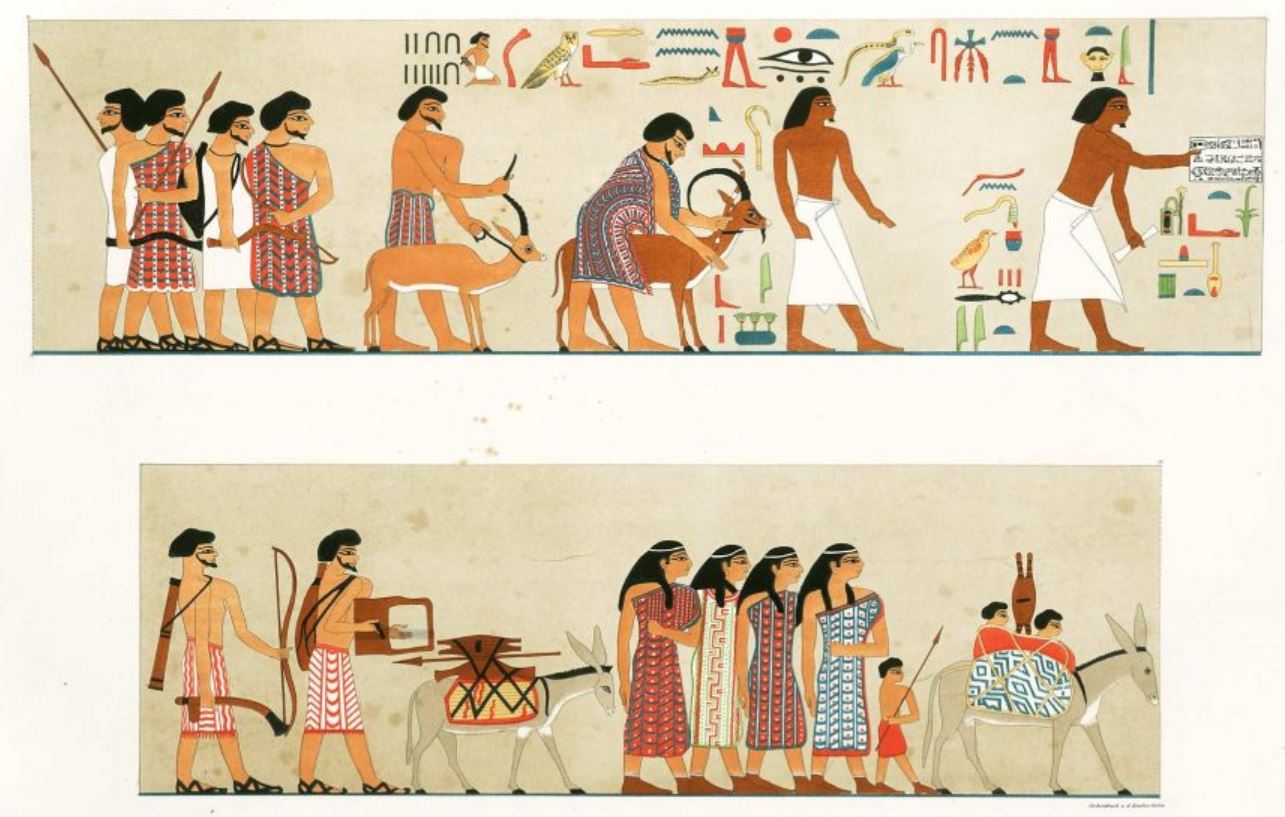In this week’s parasha, Bo, the Israelites are finally freed from their subjugation in Egypt. We read that in their haste to leave, they bound up their unleavened dough in their garments (Exodus 12:34). Intriguingly, the very next verse says that the Israelites took from the Egyptians “silver items, gold items, and garments”. This is significant in light of the famous Midrash that the Israelites merited to be saved because they preserved three things throughout their long enslavement: their cuisine, their language, and their clothing (see Pesikta Zutrata on Ki Tavo, 46a).* In other words, the Israelites preserved their unique Hebrew foods (included in which is observing the mitzvah of not consuming the gid hanashe, which began with Jacob), their divine Hebrew language, and also their unique mode of dress. What was this dress, and how was it different from the garments of the Egyptians?
Tag Archives: Ancient Egypt
Israel’s Greatest Enemy: The Erev Rav
At the end of parashat Bo the Israelites are finally free and set forth out of Egypt. We are told that along with the Israelites came out an Erev Rav (Exodus 12:38), a “mixed multitude” of people that joined them. Rashi explains that these were non-Jews who wished to convert and become part of the Jewish people, having seen such great wonders and miracles. Ibn Ezra adds that they were mostly Egyptians, and Shadal (Rabbi Shmuel David Luzzatto, 1800-1865) says they were Egyptians that had intermarried with Jews. He proves it from Nehemiah 13:3, where the non-Jewish “erev” were separated out of the returning Jewish population. The Zohar (II, 191a) states that many of the Erev Rav were Egyptian magicians, witches, and wizards, who would perform their tricks in the erev ravrava, the “great evening”. The time between sunset and midnight is when the impure forces are most active, hence a “great evening” for those wicked people.
The Zohar teaches that God warned Moses not to accept the Erev Rav, for they would cause nothing but trouble. Moses had a hard time keeping them away and thought that perhaps they could be redeemed. Not surprisingly, God was right. The Erev Rav went on to cause mayhem both in the Exodus generation itself, and throughout Jewish history, until the present. As we shall see, they orchestrated the Golden Calf and the Midianite catastrophe, among other calamities. While the term “Amalek” is reserved for Israel’s external nemesis, the Erev Rav is the far more dangerous enemy from within. Of them the prophet Isaiah said “…those who destroy you and ruin you emerge from within you.” (Isaiah 49:17) Now, more than ever, we need to understand: Who is the Erev Rav? How can we identify them today? And, most importantly, how do we stop them?
The Bone of Resurrection and the City of Immortals
This week’s parasha, Vayetze, begins with Jacob’s famous vision of the Heavenly Ladder. This occurred at a place called Beit-El (literally “House of God”), which our Sages identified with the Temple Mount, where the House of God would be built in the future. The Torah makes sure to point out that the place was originally called “Luz” (Genesis 28:19). The same word appears one more time in this week’s parasha, when Jacob stimulates his sheep to produce different spots, and uses luz as a visual cue for them (Genesis 30:37). Rashi comments that luz is a type of nut, and says that in (Old) French it is called “coldre”. The Old French Anglo-Norman Dictionary defines “coldre” as a hazelnut. In Modern Hebrew, egozei luz refers to hazelnuts, too. Alternatively, it may refer to an almond, as the Midrash (Kohelet Rabbah 12:5) says:
“…and the almond shall blossom” (Ecclesiastes 12:5) Rabbi Levi says this refers to the luz of the vertebrae. Hadrian (may his bones be crushed and his name blotted out) asked Rabbi Yehoshua ben Chananiah: “From what will man ‘blossom’ in the future?” He replied: “From the luz of the vertebrae.” He said to him: “Prove it to me.” [Rabbi Yehoshua] had one brought; he placed it in water but it did not dissolve; he put it in fire, but it was not burnt; he put it in a mill but it was not ground. He placed it on an anvil and struck it with a hammer; the anvil split and the hammer was broken but all this had no effect on the luz.
The wicked Roman emperor Hadrian (who crushed the Bar Kochva Revolt, during which Rabbi Akiva was executed, among countless others) once questioned Rabbi Yehoshua as to how people could be resurrected in the future if their bodies completely decompose. Rabbi Yehoshua answered that there is a special, tiny, nut-like bone in the human body, along the vertebrae, that is indestructible. From this bone, God will rebuild the entire person. Anatomically-speaking, which bone is this? Continue reading

